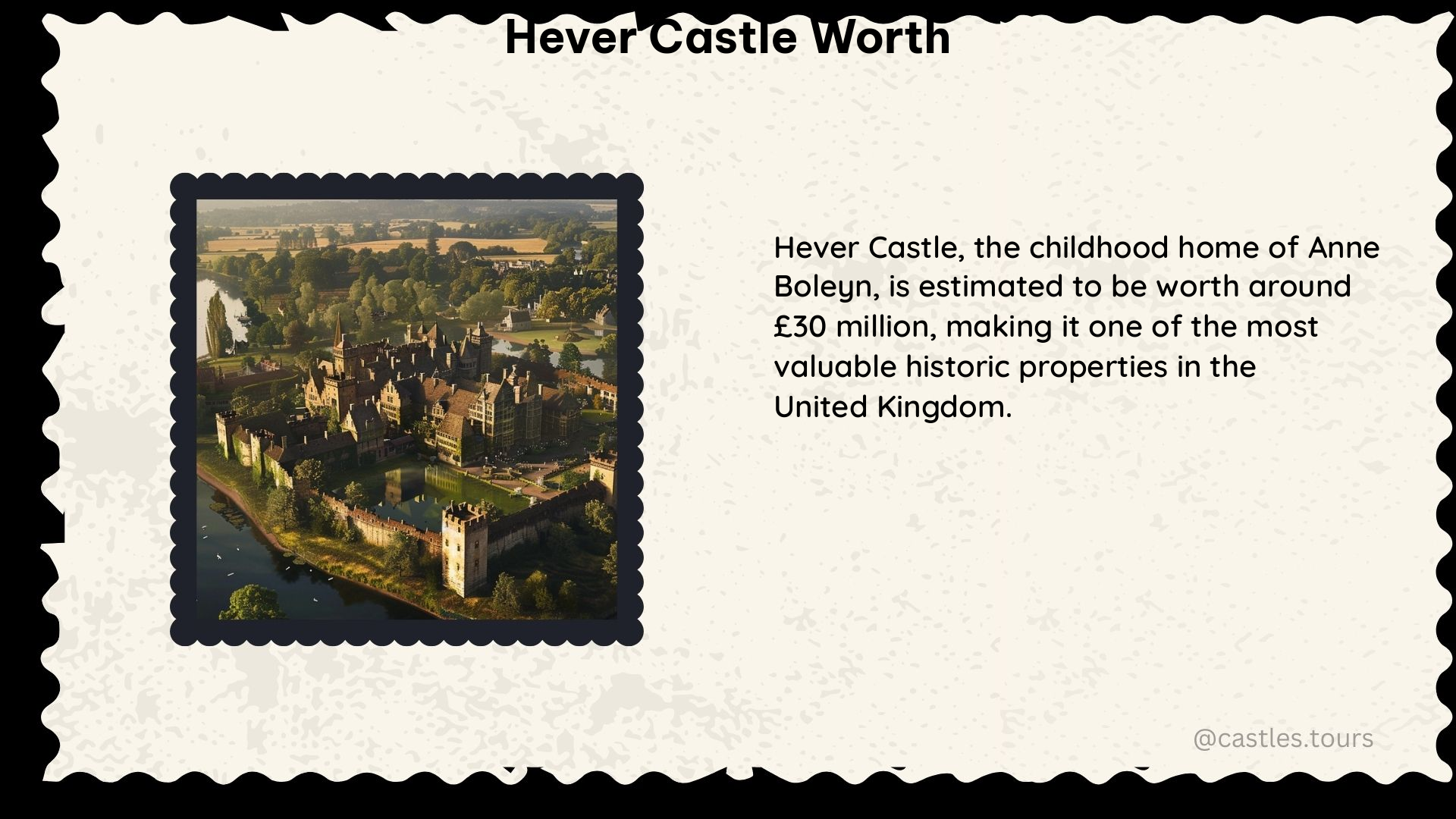Hever Castle, located in the village of Hever, Kent, England, is a significant historical site with a rich history dating back to the 13th century. Its worth lies in its historical significance, architectural value, and status as a popular tourist attraction, offering a range of activities and features that captivate visitors from around the world.
Historical Significance of Hever Castle
Hever Castle is renowned for being the childhood home of Anne Boleyn, the second wife of King Henry VIII. The castle has been the seat of the Boleyn family from 1462 to 1539 and later passed into the possession of King Henry VIII’s fourth wife, Anne of Cleves. This deep connection to the Tudor dynasty adds immense historical value to the castle.
Architectural Grandeur of Hever Castle

The castle has undergone several periods of construction, with the oldest part dating back to 1270. It features a gatehouse and a walled bailey, and its stone walls still contain the remains of the original country house timbers. The gatehouse is the only original part of the castle and has the oldest working original portcullis in England, making it a true architectural marvel.
Hever Castle as a Tourist Attraction
Hever Castle is now a popular tourist attraction, offering a range of activities and features that captivate visitors. The castle grounds include a yew maze planted in 1904, a water maze opened in 1999, and an Italianate garden, rose gardens, herb garden, and topiary. The castle also offers 28 rooms for overnight stays in a B&B format, with dining rooms available in both the Astor wing and Anne Boleyn wing. Additionally, the castle hosts various events throughout the year, such as jousting tournaments, archery displays, and a patchwork and quilting exhibition.
Economic Value of Hever Castle
The castle was valued at $24 million when it was put up for sale in 1983. It was sold to Broadland Properties Ltd, a British real-estate company, which intended to keep the castle and its gardens accessible to the public. This demonstrates the significant economic value of Hever Castle.
Restoration and Development of Hever Castle
William Waldorf Astor, who purchased the castle in 1903, invested heavily in its restoration and development. The work on the Hever estate reputedly cost £10 million (over £1 billion today), with almost £1 million spent on creating the gardens and lake. This extensive investment has contributed to the castle’s current grandeur and appeal.
Cultural Significance of Hever Castle
Hever Castle has been used as a filming location for several notable productions, including “The Princess Bride,” “Inkheart,” and “The Great”. This further enhances the castle’s cultural significance, as it has been featured in popular media and has become a recognizable landmark.
In conclusion, Hever Castle’s worth is multifaceted, encompassing its historical significance, architectural grandeur, status as a tourist attraction, economic value, and cultural significance. This captivating historical gem continues to captivate visitors from around the world, offering a glimpse into the rich history and grandeur of England’s past.
References:
– Tripadvisor. (n.d.). Hever Castle & Gardens. Retrieved from https://www.tripadvisor.com/ShowUserReviews-g503908-d214779-r401965963-Hever_Castle_Gardens-Hever_Sevenoaks_District_Kent_England.html
– Wikipedia. (n.d.). Hever Castle. Retrieved from https://en.wikipedia.org/wiki/Hever_Castle
– The New York Times. (1983, January 22). CASTLE OF ASTORS SOLD IN ENGLAND. Retrieved from https://www.nytimes.com/1983/01/22/arts/castle-of-astors-sold-in-england.html
– Hever Castle. (n.d.). William Waldorf Astor and Hever Castle. Retrieved from https://www.hevercastle.co.uk/news/william-waldorf-astor-hever-castle/.
